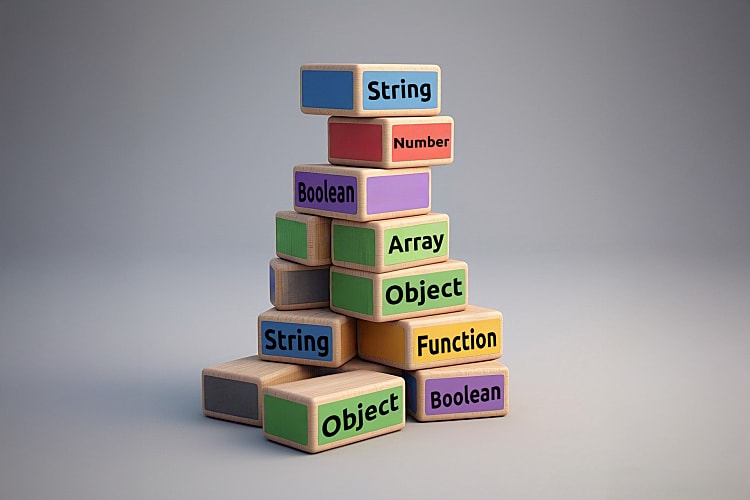
How I Built a Budget-Friendly Custom Mechanical Keyboard (Part 1 - The Deep Dive Before the Build)
22nd April 2025 • 8 min read — by Aleksandar Trpkovski
I’ve been meaning to write this blog post for a few years now — I just never got around to it. But here we are. This is the story of how I got into custom mechanical keyboards and how that small curiosity turned into a full-blown obsession.
A few years back, I was bitten by the mechanical keyboard bug. At first, I thought, “I’ll just buy a pre-built one and be done with it.” No need to dive deep or spend too much time building one myself, right? Well… that was just the beginning.
My first keyboard came with brown tactile switches. I liked it at first, but as I started exploring the community and learning more, I realised those switches weren’t quite what I was after. So, I tried a new board with red linear switches. And then another one. And then I started swapping keycaps. And experimenting with sound. And trying out different sizes. Before I knew it, I was building and modding keyboards myself — chasing that perfect feel and sound.
In this blog article, I want to share my journey with you and give you a beginner-friendly intro to the world of custom mechanical keyboards. We’ll go over the basics — switches, keycaps, barebones kits, and everything in between. And by the end, we’ll even build a budget-friendly custom keyboard together.
Let’s jump in.
Choosing the Right Size — What Feels Right?
Before you start shopping for parts, it's good to understand the different keyboard sizes. There’s no “best” layout — it really comes down to what fits your workflow and desk space.
Here are the most common options:
- Full-size (100%): Includes everything — letters, numbers, function row, arrow keys, and a number pad. Classic.
- Tenkeyless (TKL): Drops the number pad, which saves space but keeps the arrows and navigation keys.
- 75%: Similar to TKL but more compact. Everything’s smushed together a bit, which I personally love.
- 65%: Ditches the function row but keeps arrows and a few handy keys. A great balance of form and function.
- 60%: Minimalist vibes. Just the alphas, modifiers, and that's it. You’ll need layers for the rest.
- 40% (and smaller): Ultra-compact. These are fun and quirky but come with a learning curve.
If you’re just getting started, I’d suggest trying a 75% or TKL layout. You get most of the keys without the desk-hogging size of a full layout.
What Actually Makes a Mechanical Keyboard?
A mechanical keyboard isn’t just about cool keycaps (though they do look awesome). Under the hood, there are a few main components:
- Keycaps – What your fingers press. They come in different shapes and materials.
- Switches – These sit under the keycaps and decide how your board feels and sounds.
- Plate – A layer that holds your switches in place. It affects stiffness and acoustics.
- PCB (Printed Circuit Board) – The brains. Detects keystrokes and sends them to your computer.
- Stabilisers (Stabs) – These go under bigger keys (like spacebar and Enter) to keep them from wobbling.
- Foam or Dampening Layers – Optional, but highly recommended. These reduce vibration and improve sound.
- Case – Can be plastic (cheap and light), aluminum (solid and premium), or polycarbonate (soft and thocky).
- Cable – Usually detachable on customs. Bonus points if it’s coiled ☺️.
Most people start with a barebones kit, which gives you the essentials: case, PCB, plate, and stabilisers. You bring the switches and keycaps to the party.
Let’s Talk Keycaps — Feel, Sound, and Style
Keycaps might seem like just a cosmetic choice, but they have a big impact on the way your board feels and sounds.
Profile (aka shape and height)
This is all about how each row is sculpted:
- SA – Tall, retro-style, and heavily sculpted. They look cool but can take some getting used to.
- Height: ~16.3 mm
- OEM – The standard shape used on most pre-built keyboards. Slightly sculpted and comfortable for general use.
- Height: ~11.9 mm
- Cherry – Shorter than OEM, with a smoother curve. Many enthusiasts love this profile for its comfort.
- Height: ~9.4 mm
- DSA/XDA – Flat profiles with a uniform height. I personally love these — especially XDA. They’re clean and minimalist.
- Height: ~7.6 mm (DSA), ~9.1 mm (XDA)
Material
Two main types here:
- ABS – Smooth and light. More prone to shine over time but often more colourful.
- PBT – Tougher and more textured. Usually sounds deeper and lasts longer.
For me, it’s XDA + PBT all day. I just love the feel, and the sound is super satisfying.
Inside the Switch — What’s Going On Under There?
A switch might be small, but it’s doing a lot. Here’s what’s inside:
- Top Housing – The outer shell that holds it all together.
- Stem – The coloured bit that moves up and down when you type.
- Spring – Gives the switch resistance and bounce.
- Bottom Housing – Connects the switch to your PCB.
Simple enough, right? But small design changes can totally change how a switch feels.
Switch Types — Linear, Tactile, or Clicky?
When people talk switches, they usually mean one of these three:
- Linear – Smooth from top to bottom. No bump, no click. Great for fast typing and gaming.
- Most popular: Gateron Red, Cherry MX Red, Kailh Red
- Tactile – Has a little bump mid-press that lets you know the key’s registered.
- Most popular: Gateron Brown, Cherry MX Brown, Zealios V2
- Clicky – Like tactile, but louder. Click sound and all.
- Most popular: Gateron Blue, Cherry MX Blue, Kailh Box White
I started on tactiles, but eventually I fell in love with linears. There’s something super buttery about them — especially when lubed.
Understanding Switch Force
When exploring mechanical switches, you'll see measurements like 45g or 62g. That "g" stands for grams of actuation force — the pressure needed to register a keystroke.
Here's what different actuation forces feel like:
- < 45g – Ultra-Light: Feather-light touch. Perfect for fast typing but might cause accidental keypresses.
- 45–55g – Light: Smooth and effortless. Most popular for beginners and everyday typing.
- 55–65g – Medium: Balanced resistance. Offers precise control without finger fatigue.
- 65g+ – Heavy: Firm resistance. Great for heavy-handed typists who want to prevent misclicks.
For beginners, I suggest switches in the 45-55g range. This sweet spot lets you comfortably develop your typing style.
Everyone has a preference — and trying different switches is part of the fun. If possible, grab a switch tester (there are plenty available to order from various manufacturers) or use a hot-swappable keyboard to experiment. Feeling the differences firsthand is the best way to figure out what suits your typing style.
Let’s Talk Sound — What is a “Thocky” Keyboard?
Ah yes — the famous thock. If you hang around keyboard nerds long enough, you’ll hear a lot of sound talk.
- Thock – Deep, satisfying, and soft. The holy grail.
- Clack – Sharper and brighter. Think crisp clicks.
- Hollow – That cheap, echoey sound you don’t want.
What affects sound?
- Switch type – Linears are usually quieter. Clickies are loud and proud.
- Keycaps – PBT tends to sound deeper.
- Case material – Aluminum sounds solid; plastic is lighter and often more hollow.
- Mods – Adding foam, lubing switches, taping the PCB — these can transform your board.
The fun part? You can experiment endlessly until it sounds just right.
Ready to Build Your First Budget Custom Keyboard?
We’ve covered a lot, and you’re probably itching to start building your own board now — and you totally should! In the next section (coming soon), I’ll walk you through building a beginner-friendly mechanical keyboard from a barebones kit, all without breaking the bank.
Trust me: it’s way easier than it seems — and way more fun than you expect.
Let me know if you want help picking parts or figuring out a build that works for your budget. I’m always down to geek out about keyboards!
Further Reading
Explore more articles that might interest you.






